Direct Impact, Direct Aid: Action for Ukraine
Strengthening Bonds, Amplifying Impact
Embarking on a renewed mission in 2023, we introduced “Action for Ukraine” – Action-PSJ’s sister NGO, rooted in the heart of the nation it serves. This strategic move amplifies our commitment to the Ukrainian community, allowing us to channel resources with precision and purpose. By bridging the gap between generous hearts and those in need, we ensure that every donation directly touches lives, fostering hope and rebuilding futures. Join us in this journey of direct impact and unwavering support.

Community Chronicles: The Heartbeat of Action-PSJ
on heritage, hardship, and the hope kindled by Action-PSJ.
Alisa Rostovtseva
Mariupol Community
Coordinator since January 2022
Community Size
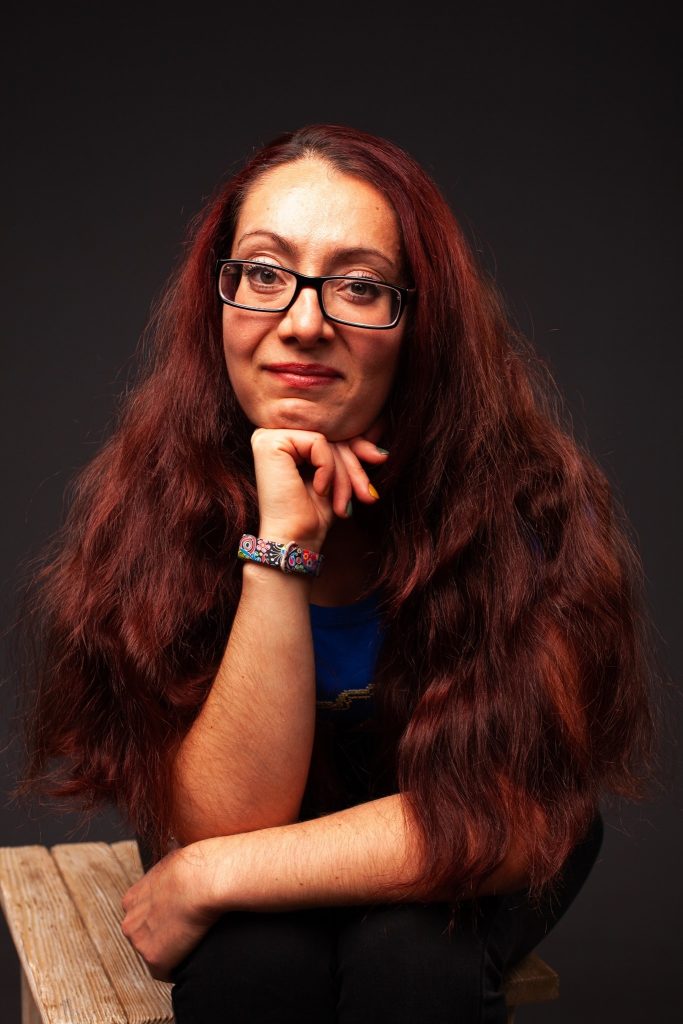
What inspired you to join this initiative? What responsibilities do you undertake?
I am coordinating a project for elderly Jews from Mariupol, who are currently living in different cities in Ukraine. These are at the moment the most vulnerable beneficiaries, as they have lost their homes and were forced to flee their city. I keep in touch with them, coordinate the distribution of aid, and ensure timely receipt of both financial support and other aid. I gather information through interviews in different cities of the project to help donors and sponsors connect with the beneficiaries on a more human level.
Describe the heartbeat of your city and community. What are its cherished landmarks, and distinguished features?
At the moment, our city is sadly known all over the world. In March-April 2022, it was practically razed to the ground by Russian troops. After that, the destroyed, weakened city was occupied. There is no information about the population yet, as reliable figures are being hidden. Hundreds of thousands of refugees have left the city. Tens of thousands of people have been killed. We are scattered across Ukraine, but we are united in our efforts to help those in need.
How has the fabric of the Jewish community evolved since the onset of the war? (Have many relocated? Are people returning? Are there newcomers in your town?)
Before the terrible events of February 2022, Mariupol had a thriving Jewish community of over a thousand people. The community was active in many areas, including education, with programs for people of all ages.
It offered a variety of programs and services, including a kindergarten, evening school, youth projects, Torah study courses for the older generation, and a wide range of charitable projects. Every Shabbat in the synagogue felt like a special occasion, and the traditional holidays of the Jewish calendar were celebrated with friendship, fun, and on a large scale. The community used three buildings: the synagogue, the educational center, and the old synagogue, which had been used for household functions in recent years.
After the Russian troops bombed the city, two synagogues – the old and the new – were completely destroyed and burned down. The educational center building was partially damaged by shelling and was completely looted. The houses of most members of the community were destroyed.
The Jewish community of Mariupol, led by Rabbi Menachem Mendel Cohen, evacuated most of the Jews from the city. The evacuation was carried out around the clock for several months, with most people going to Israel and a few to Europe. However, many families remained in Ukraine. Despite the war, they continue to live and attend synagogues in new cities, but their thoughts remain in Mariupol, where they had Shabbat services, lessons, and meetings in January 2022.
Only a tiny percentage of the Jewish community in Mariupol remains in the city. Most of them are elderly people whose homes were not destroyed. They do not want to leave their homes and are defending their right to live there. Despite the terrible treatment, lack of help, and support, they remain in Mariupol. The Jewish community is trying to find ways to help and support them. There is no centralized Jewish life in the city anymore. It was destroyed, along with the homes of Jews.
Many Jews from Mariupol who are now living in Ukraine need help rebuilding their lives after losing their homes, belongings, and sense of normalcy. They left with only a bag full of old things. Now, they have to buy everything from umbrellas to bedding to blood pressure monitors, to slippers and rubber hot water bottles. Even the most basic items are a luxury for them, and many are afraid to buy a towel, for fear that they will have to flee again and leave it behind.
How has ACTION made a tangible difference in your community, especially for the elderly?
The ACTION project provides financial assistance and support to the most vulnerable of them, such as pensioners and the elderly. They can use this money to purchase anything they need, such as medicine or clothing, but other needs are also taken into account. The project is also very flexible and adaptable to the current situation, providing prompt assistance with the most essential items. For example, they provided blankets and heaters during the winter, and when the Russians began to bomb the infrastructure and electricity was cut off in the cities, they quickly provided lamps, power banks, heated vests, and special containers for heating food. This was invaluable and important assistance for each of the beneficiaries.The organization was there for each of its beneficiaries from the moment they got in touch with Mariupol. They provided immediate assistance so that people could buy the most essential items. For example, some bought ordinary shopping bags because their plastic bags had torn and scattered during their escape from the city. Others urgently needed shoes, a charger, or medicine. The project was there and people received the most important things without having to go through long conversations or bureaucratic red tape.
Is there a particular message or insight you'd like to share with us?
We are deeply grateful to everyone who is involved in ACTION and provides such incredible and powerful support to Ukrainian Jews. Your kindness and generosity are truly appreciated. Thanks to you, we can help those who need it most
Community Chronicles: The Heartbeat of Action-PSJ
on heritage, hardship, and the hope kindled by Action-PSJ.
Olena Shekhovtsova
Novomoskovsk Community
Coordinator since February 2022

What inspired you to join this initiative? What responsibilities do you undertake?
I began participating in the project even before the war, knowing that elderly people with low incomes struggle to make ends meet, spending a large portion of their pension on medication. I wanted to help them, and this became even more important with the start of the war. I now transfer money, food, items, and equipment from sponsors to my beneficiaries, and I also provide moral support.
Describe the heartbeat of your city and community. What are its cherished landmarks, and distinguished features?
Before the war, Novomoskovsk had a population of about 70,000 people. Now, more than 8,000 refugees have been added to the city. It is mostly a recreational area, and two of its most notable landmarks are the Holy Nicholas Samara Desert Monastery (first mentioned in 1576) and the Holy Trinity Cathedral, built in 1775-1778 without a single nail. There is a 19th-century Synagogue, although it is no longer used by the Jewish community.
Please describe the Jewish community in your city or town in terms of its size, institutions, and activities.
In Novomoskovsk, there are about 100 Jews. The Synagogue and the Heder are not functioning, as the city uses the buildings for other purposes. However, there is a Jewish religious and Jewish secular organization, Hesed (office in Pavlohrad), which holds Jewish holidays in the communities. The city also has its own “Babi Yar”, a place of mass shootings of Jews. The current mayor of Novomoskovsk, Serhii Rieznik, is a Jew.While still a deputy, he managed to establish a monument to the victims of the Nazi mass shootings.
How has the fabric of the Jewish community evolved since the onset of the war? (Have many relocated? Are people returning? Are there newcomers in your town?)
Since the beginning of the war, about 13% of the Jews in Novomoskovsk have left the country, mainly to Israel. Young families have been separated, as men under the age of 60 are not allowed to leave Ukraine. Two families (3 and 2 people) have moved to Novomoskovsk from the war zones.
How has ACTION made a tangible difference in your community, especially for the elderly?
ACTION provides tremendous support to the elderly Jewish community in Novomoskovsk. Inflation has caused their small pensions to become meager, but financial assistance from the organization has allowed them to purchase necessary medications and other essential items. In the winter, when people were without electricity and heat, ACTION provided lamps, heated vests, thermal underwear, and warm blankets, which were lifesavers. Instant foods and canned goods also helped people survive the winter. Power banks with the ability to charge a solar panel allowed people to stay in touch and use lamps. The elderly people are grateful for the warm wishes and drawings, and they are hopeful that the recently launched Telehealth project will give them access to qualified medical care.
Is there a particular message or insight you'd like to share with us?
I am deeply grateful to everyone who supports our people. Your hearts are not indifferent to the problems and misfortunes of others, and your help is greatly appreciated.
Community Chronicles: The Heartbeat of Action-PSJ
on heritage, hardship, and the hope kindled by Action-PSJ.
Inna Kutyshcheva
Melitopol Community
Community Coordinator since the inception of the Hesed project in 1998
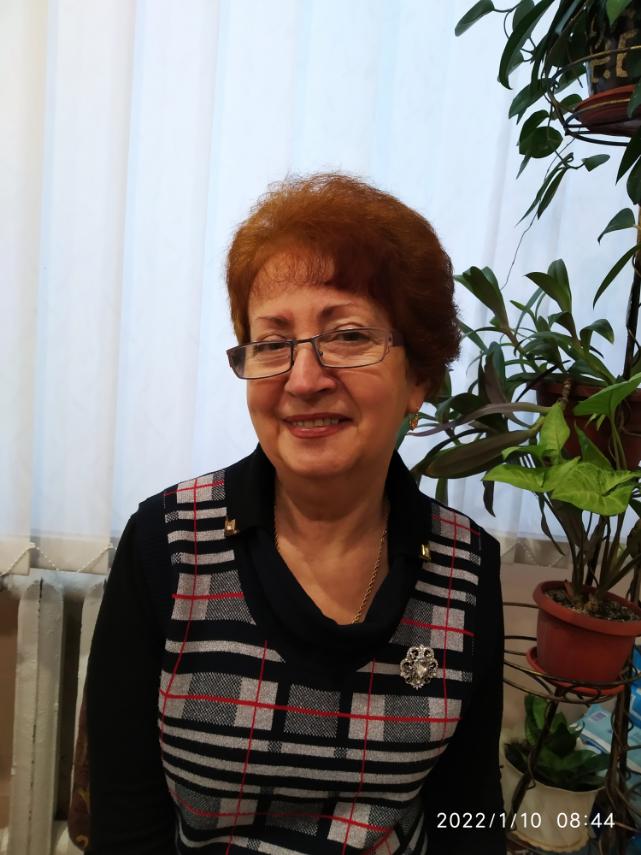
What inspired you to join this initiative? What responsibilities do you undertake?
I provide support to elderly, lonely, and vulnerable members of the Jewish community in the city. I am the contact person between the project leaders and our beneficiaries.
Describe the heartbeat of your city and community. What are its cherished landmarks, and distinguished features?
The city had a population of about 150,000 people before the start of the war. One of its attractions is The National Historical and Archaeological Reserve “Kamyana Mohyla”. The city of Melitopol is known as the “Cherry Capital of Ukraine”. It is also an intercultural city, with about 100 nationalities living in peace and harmony.
Please describe the Jewish community in your city or town in terms of its size, institutions, and activities.
Before the war, the Jewish community in Melitopol had about 400 members. A religious Jewish community is registered in the city, and there were plans to restore the synagogue. However, the war has made these plans difficult to implement.
Before the war, Melitopol was home to several organizations that served the Jewish community. These included the women’s project “Keshet”, the Community Center of the “ZBF” Hesed Michael” Charitable Organization, and the Sohnut branch.
The Memorial Complex “Living, Remember” is located at the city limits. It is dedicated to the memory of the victims of the Holocaust, including about 9,000 Jews who were shot in the Melitopol “Bai Yar” ravine. In August 2020, a memorial to the unborn victims of the Holocaust was opened.
How has the fabric of the Jewish community evolved since the onset of the war? (Have many relocated? Are people returning? Are there newcomers in your town?)
The war in Ukraine has had a significant impact on the Jewish community. About 40% of the community members have left the city, mostly young and middle-aged people. The older generation has remained in the city, either because they did not want to leave their homes or because they are not mobile.
Those who have evacuated cannot return home yet, as the city is still occupied by the Russian regime. Living in occupied conditions is very difficult, and many people are not ready to accept the new regime. As a result, they have to live abroad.
How has ACTION made a tangible difference in your community, especially for the elderly?
The foundation used to provide financial assistance for holding Sabbaths and Jewish holidays. They also sent humanitarian aid such as clothing, medical equipment, and medicines by mail. Now, everything has changed. We can only provide assistance to our beneficiaries by transferring money to their personal bank cards.
Is there a particular message or insight you'd like to share with us?
While our city is under occupation, there is nothing more to add. Our beneficiaries feel your care and warmth! I would like to express my sincere gratitude to the founders of ACTION, its donors, and sponsors.
Community Chronicles: The Heartbeat of Action-PSJ
on heritage, hardship, and the hope kindled by Action-PSJ.
Arkady Zolotonogov
Smela Community
Coordinator Since 2015
Size of Community: 14
Smela@actionpsj.org

What inspired you to join this initiative? What responsibilities do you undertake?
I try to help people by distributing the aid that comes in.
Describe the heartbeat of your city and community. What are its cherished landmarks, and distinguished features?
Smela is a historically Jewish town. Its population was about 50,000 before the war, but it is changing due to the full-scale invasion. It is a lush town on the banks of the Tyasmin River.
Please describe the Jewish community in your city or town in terms of its size, institutions, and activities.
The Jewish community in the city has about 80 members. Before the war, they celebrated holidays together. Today, they are trying to help their fellow Jews in any way they can. In the forest near the city, there is a memorial stone where Jews and local residents were shot during the war of 1941-1945.
How has the fabric of the Jewish community evolved since the onset of the war? (Have many relocated? Are people returning? Are there newcomers in your town?)
The situation has not improved, but the community is determined to help each other.
How has ACTION made a tangible difference in your community, especially for the elderly?
We are grateful for the support of ACTION and other organizations. I wish everyone good health and a speedy victory.
Is there a particular message or insight you'd like to share with us?
I wish ACTION continued prosperity.
Community Chronicles: The Heartbeat of Action-PSJ
on heritage, hardship, and the hope kindled by Action-PSJ.
Inna Shvets
Uman Community
Coordinator since 2017
Size of Community: 16
Uman@actionpsj.org

What inspired you to join this initiative? What responsibilities do you undertake?
We participate in the project because we lack the financial means
Describe the heartbeat of your city and community. What are its cherished landmarks, and distinguished features?
Uman is a tourist city with a population of about 80,000 people. Every year, Hasidic Jews come to our city to celebrate Jewish holidays and visit the grave of Rabbi Nachman of Breslov. The city is also home to one of the most famous dendrological parks in Ukraine, Sofiyivka.
Please describe the Jewish community in your city or town in terms of its size, institutions, and activities.
The Jewish community in Uman has 112 members. The only synagogue in the city is located on the Hasidic pilgrimage site. The other 13 synagogues were destroyed by the Soviet authorities. There is also a place of mass execution of Jews in Uman, called the Dry Ravine, where 25,000 people were shot. Until February 24, 2022, all Jewish holidays were celebrated in the community with delicious kosher cuisine.
How has the fabric of the Jewish community evolved since the onset of the war? (Have many relocated? Are people returning? Are there newcomers in your town?)
Since the beginning of the war, our community has shifted its focus to meeting the needs of wartime. Two people have permanently relocated to Israel. The community has welcomed, assisted, and is continuing to assist displaced people from other cities and regions to the best of its ability.
How has ACTION made a tangible difference in your community, especially for the elderly?
I would like to thank the project leaders and wish them good health, peace, and prosperity in the years to come.
Community Chronicles: The Heartbeat of Action-PSJ
on heritage, hardship, and the hope kindled by Action-PSJ.
Liudmyla Furman
Kryvyi Rih Community
Coordinator Since 2019

Describe the heartbeat of your city and community. What are its cherished landmarks, and distinguished features?
Our city has a population of about 700,000 people and is one of the longest in Europe (125 km). It is also famous for its mining.
Please describe the Jewish community in your city or town in terms of its size, institutions, and activities.
There are over 2,000 Jews in our community. We have a synagogue, a Jewish community center called Chesed Hana, and a center for the elderly. A monument to the victims of the Holocaust is located near the synagogue, and there are also several monuments in the surrounding villages. Celebrations and concerts are held in the synagogue and in Chesed Hana, and transportation is provided for the disabled.
How has the fabric of the Jewish community evolved since the onset of the war? (Have many relocated? Are people returning? Are there newcomers in your town?)
About 30 percent of Jews have left the city, but some families have already returned. There are many refugees.
How has ACTION made a tangible difference in your community, especially for the elderly?
The elderly receive great help, both moral and material. They feel cared for and have more activities and social interaction.
Is there a particular message or insight you'd like to share with us?
On behalf of everyone under your care, I express my gratitude.
Community Chronicles: The Heartbeat of Action-PSJ
on heritage, hardship, and the hope kindled by Action-PSJ.
Anna Salyk
Kamianske Community
Coordinator since 2019

Describe the heartbeat of your city and community. What are its cherished landmarks, and distinguished features?
Kamianske (formerly Dniprodzerzhynsk) is a city of metallurgists with a population of about 250,000. It sits on the banks of the Dnipro River and is a major railway junction. The first written mention of the village of Kamianske dates back to 1750.
In 1887-1889, Polish, Belgian, and French shareholders built the Dnipro Metallurgical Plant on land purchased from the village association. This led to the rapid growth of the village. At the end of the 19th and beginning of the 20th centuries, two settlements were built for employees and factory workers: Upper and Lower Colonies. In 1896, the village had 18,000 inhabitants, and by 1913, the population had grown to 40,407 people, including 24,475 Ukrainians, Belarusians, and Russians; 14,175 Poles; and 1,220 Jews. In June 1917, the Provisional Government granted the village of Kamenskoye the status of a town and renamed it Kamianske.
Kamianske, a city with a difficult environmental situation, has been proposed for designation as an ecological disaster zone. The right-bank part is especially polluted due to the presence of industrial enterprises, including a metallurgical, chemical, and coke complex. Tailings from the Prydniprovskyi Chemical Plant, which contain uranium production waste, are also located near the urban area. Kamianske has a museum of its history and an academic music and drama theater named after Lesya Ukrainka.
Please describe the Jewish community in your city or town in terms of its size, institutions, and activities.
Please describe the Jewish community in your city or town in terms of its size, institutions, and activities. https://drive.google.com/file/d/1iasMg1BaphqqI8kukbE485nwBMn5zP9r/view?usp=sharing
How has the fabric of the Jewish community evolved since the onset of the war? (Have many relocated? Are people returning? Are there newcomers in your town?)
Since the start of the war, about 20% of the community members fled to Israel. However, almost all of them have since returned. There are refugees in the city.
How has ACTION made a tangible difference in your community, especially for the elderly?
The help provided by Action is invaluable. Elderly people have received financial help, warm clothing, medicine, and food. Lighting tools (such as flashlights and lamps), power banks, and lunch boxes have been very helpful during power outages.
Is there a particular message or insight you'd like to share with us?
Many thanks to the coordinators and sponsors.
Community Chronicles: The Heartbeat of Action-PSJ
on heritage, hardship, and the hope kindled by Action-PSJ.
Iryna Voyko
Pavlohrad Community
Coordinator Since 2022

Describe the heartbeat of your city and community. What are its cherished landmarks, and distinguished features?
Pavlohrad is a city in the Dnipropetrovsk region of Ukraine with a population of 111,000. As of 2023, about 20,000 of its residents are internally displaced Ukrainians. Pavlohrad is home to a number of historical and cultural attractions, including the Cathedral of the Holy Savior, the Count’s Theater, and the Monument to Lieutenant Rzhevsky. But perhaps the most mysterious attraction is the nearby Mavrynskyi Maydan. This accumulation of hills and valleys is shaped like a geometrically correct truncated cone with holes in three of its peaks, which point strictly to the east, west, and south. No one can explain its origin or purpose.
Please describe the Jewish community in your city or town in terms of its size, institutions, and activities.
Pavlohrad is a small city with a Jewish community of about 200 people.There is no synagogue or Jewish educational institutions, but there is a branch of the Hesed Menahem Charitable Foundation in Dnipro. The city does have a monument to the victims of the Holocaust, which was erected on the site of the death of over 100 Jews during World War II. Before the war, a rabbi would come to the community to hold Shabbat and read and study the Torah and Hebrew. All Jewish holidays were held in an interesting and informative way.
How has the fabric of the Jewish community evolved since the onset of the war? (Have many relocated? Are people returning? Are there newcomers in your town?)
The war has had a profound impact on the Jewish community in Pavlohrad. Events have been canceled due to the sirens and explosions. People are afraid to leave their homes unless absolutely necessary. Everyone is tired of the constant fear and uncertainty. About 1% of the community has left the city for Germany and Israel. No one has returned yet. There are also internally displaced persons from Bakhmut who have sought refuge in Pavlohrad.
How has ACTION made a tangible difference in your community, especially for the elderly?
The project’s enormous help to the community was felt by all, especially the elderly. They received food, humanitarian and material aid, and moral support. They felt empathy and care from complete strangers.
Is there a particular message or insight you'd like to share with us?
We are deeply grateful for your kindness.
Community Chronicles: The Heartbeat of Action-PSJ
on heritage, hardship, and the hope kindled by Action-PSJ.
Tetiana Kolomyets
Kropyvnytskyi Community
Coordinator since 2022

What inspired you to join this initiative? What responsibilities do you undertake?
I want to help the elderly.
Describe the heartbeat of your city and community. What are its cherished landmarks, and distinguished features?
Kropyvnytskyi, a city in central Ukraine with a population of about 220,000 people, has a long and rich history. It was founded in the 17th century on the site of the St. Elizabeth fortress, which was built to protect from Tatar attacks.
The city has changed its name several times over the years. It was called Elisavetgrad until 1924, Zinovievsk until 1934, Kirovo until 1939, and Kirovohrad until 2016. In 2016, the city was renamed Kropyvnytskyi after Ukrainian playwright and actor Marko Kropyvnytskyi.
The main industries are mechanical engineering, food processing, and mining. The city is home to a number of large machine-building plants, including ZAT Hydrosila Group, OAO Red Star, and ZAT NPP “Radiy”. The subsoil of Kropyvnytskyi is rich in uranium ore. The main mine is the Ingulets mine of the East Mining and Processing Plant (VostGOK).
The Great Choral Synagogue is a historical and architectural monument that is the city’s center. The synagogue was built in the late 19th century and was closed in Soviet times. The building was then used as a club, a house of culture, and a cinema. In 1991, the synagogue was returned to the community. Today, it is home to the Kirovohrad Community, the Religious Community, and the Atiqa Community.
Please describe the Jewish community in your city or town in terms of its size, institutions, and activities.
The Jewish communities in Kropyvnytskyi have about 650 members. The members of the community are actively involved in the life of the city and are frequent organizers of events and meetings in memory of the victims of the Holocaust. In addition, community members monitor the condition of the memorial complexes and places of historical memory of the city’s Jewish diaspora. They carry out the reconstruction and installation of new monuments in Kropyvnytskyi and continue to work on the restoration of the Museum of the History of the Jews of Kirovohrad.
How has the fabric of the Jewish community evolved since the onset of the war? (Have many relocated? Are people returning? Are there newcomers in your town?)
In the first months of the war, 85 members of our community left the country. About half of them returned. Unfortunately, 44 people could not withstand the stress and passed away. Many of the internally displaced persons who found refuge in our city have registered with us. In total, there are 110 people, mostly elderly, but there are also young people and children.
How has ACTION made a tangible difference in your community, especially for the elderly?
ACTION has provided our community with much-needed support, including moral, material (money, food, medicine, warm clothes, flashlights, etc.), and psychological support to overcome social loneliness
Is there a particular message or insight you'd like to share with us?
We are grateful for their help during these difficult times.
Community Chronicles: The Heartbeat of Action-PSJ
on heritage, hardship, and the hope kindled by Action-PSJ.
Valentyna Taybbyshlak
Cherkasy Community
Coordinator Since December 2019
Size of Community: 10
Cherkasy@actionpsj.org

Describe the heartbeat of your city and community. What are its cherished landmarks, and distinguished features?
Cherkasy, a city on the banks of the Dnipro River, has a long and rich history. It was founded in the 13th century as a frontier town and served as a garrison to protect against steppe nomads. Over time, Cherkasy became a center of the formation of the Cossack army. It is often described in historical and artistic works about the Khmelnytsky and Koliivshchyna wars, which swept through the region.
Cherkasy is also the land of Taras Shevchenko, the national poet of Ukraine. He was born and buried here.
Cherkasy Oblast is the youngest region in Ukraine. It was created in 1954, and our city became its regional center. According to the 2021 census, there were about 300,000 people living in it.
Please describe the Jewish community in your city or town in terms of its size, institutions, and activities.
The Jewish community has been registered since the 1990s. There is Hesed, a synagogue and a Jewish school.
How has the fabric of the Jewish community evolved since the onset of the war? (Have many relocated? Are people returning? Are there newcomers in your town?)
Since the beginning of the full-scale invasion, only a few people have left the city. Some have already started to return. In the meantime, refugees from Kharkiv, Mariupol and Zaporizhia have arrived seeking safety.
How has ACTION made a tangible difference in your community, especially for the elderly?
In Cherkasy, there are 10 elderly people who are beneficiaries of a fund that provides them with food, warm clothes, blankets, vitamins, and financial assistance. The elderly people are very grateful for the help, as prices are rising rapidly and it is difficult to to make ends meet on a pension. They are also grateful for the support and feeling of being remembered and needed
Is there a particular message or insight you'd like to share with us?
Thank you again!
Community Chronicles: The Heartbeat of Action-PSJ
on heritage, hardship, and the hope kindled by Action-PSJ.
Liudmyla Meerovska
Lubny Community
Coordinator since April 2022
Size of Community: 10
Lubny@actionpsj.org

What inspired you to join this initiative? What responsibilities do you undertake?
Cherkasy, a city on the banks of the Dnipro River, has a long and rich history. It was founded in the 13th century as a frontier town and served as a garrison to protect against steppe nomads. Over time, Cherkasy became a center of the formation of the Cossack army. It is often described in historical and artistic works about the Khmelnytsky and Koliivshchyna wars, which swept through the region.
Cherkasy is also the land of Taras Shevchenko, the national poet of Ukraine. He was born and buried here.
Cherkasy Oblast is the youngest region in Ukraine. It was created in 1954, and our city became its regional center. According to the 2021 census, there were about 300,000 people living in it.
Describe the heartbeat of your city and community. What are its cherished landmarks, and distinguished features?
Lubny is 1030 years old with a population of 40,000 people. It is home to a few historical landmarks, such as the Lubny Museum of Local Lore, the Mharskyi Transfiguration Monastery, the Financial and Economic College, the Forestry College, and the Medical College.
Please describe the Jewish community in your city or town in terms of its size, institutions, and activities.
Our community was founded 25 years ago and has over 120 members. In Zasullya, there is a grave where Jews who were shot during the Second World War are buried with a menorah monument. There is also an old Jewish cemetery with a monument to the writer Sholem Aleichem, who served as the state-appointed rabbi in Zasullya from 1880 to 1883.
In the 19th century, the city had two synagogues. In 1913, Jews owned 2 pharmacies, 7 warehouses of pharmaceutical goods, a bakery, the only bathhouse, 5 hotels, laundries, 3 hairdressers, more than 90 shops and grocery stores. Among the Jews were 7 tailors and the only jeweller in the city. In 1916, the H.N. Bialik Library was operating. In 1919, there were pogroms. In the 20th century, the Jews were led by Shimon-Moshe Diskin. In 1920, a Jewish labor school was opened.
On September 13, 1941, the city was occupied by the German army. 1,500 Jews were shot, and a total of 2,000 Jews were shot during World War II.
In 1946, a synagogue was opened on Dostoevsky Street 7. Currently, there are no synagogues in the city.
How has the fabric of the Jewish community evolved since the onset of the war? (Have many relocated? Are people returning? Are there newcomers in your town?)
The events that are taking place are causing great emotional distress for people. Only a few people have left.
How has ACTION made a tangible difference in your community, especially for the elderly?
The project is providing a lifeline for our beneficiaries, helping them to survive these difficult times.
Is there a particular message or insight you'd like to share with us?
Your support is greatly appreciated, especially during this difficult time for our country.
Community Chronicles: The Heartbeat of Action-PSJ
on heritage, hardship, and the hope kindled by Action-PSJ.
Oleksandr Drozdov
Berdyansk Community
Berdyansk Community Coordinator since 2018

Describe the heartbeat of your city and community. What are its cherished landmarks, and distinguished features?
The city is located on the coast of the Sea of Azov, a popular destination for vacationers. In the summer, the population of the city increases several times as people flock to the beaches and enjoy the warm, shallow waters. There are many recreation centers and sanatoriums, offering a variety of treatments and activities.
Please describe the Jewish community in your city or town in terms of its size, institutions, and activities.
The community had more than 200 members. Unfortunately, the population is declining – people are dying. Until World War II, there were 2 synagogues, Jewish schools, and schools in the city. Only the Karaite Synagogue has survived to this day. The community regularly gathers to celebrate all Jewish holidays and significant dates. There are 3 Jewish monuments in the city. Houses where Jews lived have been preserved. Books on the history of Jews in Berdyansk were published.
How has the fabric of the Jewish community evolved since the onset of the war? (Have many relocated? Are people returning? Are there newcomers in your town?)
The city is under occupation
How has ACTION made a tangible difference in your community, especially for the elderly?
The project’s activities are invaluable to the community, especially for the elderly with small pensions.
Is there a particular message or insight you'd like to share with us?
I wish the project continued prosperity and development. It is a very great and invaluable help for people, especially during this difficult time. On behalf of all the participants, I would like to express our sincere gratitude to everyone who helps in any way!
Community Chronicles: The Heartbeat of Action-PSJ
on heritage, hardship, and the hope kindled by Action-PSJ.
Tetiana Halymon
Poltava Community
Coordinator since 2017
Size of Community: 13
Poltava@actionpsj.org

What inspired you to join this initiative? What responsibilities do you undertake?
I try to help my beneficiaries improve their quality of life and help them relieve their loneliness with communication and care.I help them overcome adversity and difficulties so that they do not face their problems alone.
Describe the heartbeat of your city and community. What are its cherished landmarks, and distinguished features?
Poltava is a quiet, and beautiful city with a rich history. It is estimated that the population is around 400,000 people, but this number has decreased due to the war in Ukraine. It is home to a few architectural monuments, such as The White Gazebo (a very beautiful and iconic place for the residents), and the monument to the Poltava dumpling (a culinary landmark). There are also many parks and squares, and the central architectural part of the city is under the protection of UNESCO. Poltava is also home to a beautiful Botanical Garden, which houses plants from all over the world. The riot of smells and colors in the garden is a sight to behold, and the covered flower greenhouses provide a welcome respite from the cold winter month.
Please describe the Jewish community in your city or town in terms of its size, institutions, and activities.
The community of 1,500 people revolves around the synagogue, which is the center of religious and cultural life. With the support of Rabbi Joseph Segal, a kindergarten appeared. The community also celebrates holidays together.
How has the fabric of the Jewish community evolved since the onset of the war? (Have many relocated? Are people returning? Are there newcomers in your town?)
The war forced a third of our city’s people to flee. Some found refuge in other countries, while others became refugees within our own borders. Many who left have yet to return
How has ACTION made a tangible difference in your community, especially for the elderly?
The foundation provides life-changing support to our beneficiaries. Also, it cares about their needs and helps them cope with difficult times. People here feel the attention and care they need, as well as invaluable financial assistance that allows them to buy essential medicines and food.
Is there a particular message or insight you'd like to share with us?
The beneficiaries of the organization sincerely and wholeheartedly thank the sponsors and donors for their help. They greatly appreciate the care and love they receive during difficult wartime in difficult circumstances.
Community Chronicles: The Heartbeat of Action-PSJ
on heritage, hardship, and the hope kindled by Action-PSJ.
Liudmyla Shapoval
Zhovti Vody Community
Coordinator since 2022

What inspired you to join this initiative? What responsibilities do you undertake?
My late husband, a Jew, was always willing to lend a helping hand to those in need. When he passed away, I felt compelled to continue his legacy of kindness. Now, at 84 years old, I am still committed to helping others.
Describe the heartbeat of your city and community. What are its cherished landmarks, and distinguished features?
Zhovti Vody, founded in the 19th century, is a city of over 45,000 people and the center of the uranium industry in Ukraine.
The city was founded thanks to the industrial development of the region. The discovery of iron ore deposits led to the establishment of a mining industry, which in turn attracted people and businesses to the area. The name of the city comes from the Zhovta (Yellow) River, which is colored yellow by iron oxide. Zhovti Vody is a small city with a lot of greenery. It has a large Glory Park and a Palace of Culture.
Please describe the Jewish community in your city or town in terms of its size, institutions, and activities.
The small Jewish community of Zhovti Vody, numbering just 50 people, still gathers to celebrate Jewish holidays and provide a “warm home” for those in need.
How has the fabric of the Jewish community evolved since the onset of the war? (Have many relocated? Are people returning? Are there newcomers in your town?)
When the war broke out, most people stayed put, but many young people left. Now, the city is home to many internally displaced persons.
How has ACTION made a tangible difference in your community, especially for the elderly?
Everyone is incredibly grateful for the help provided by ACTION. The warm clothes, heaters, lamps, and food sets were especially important during the harsh winter months.
Community Chronicles: The Heartbeat of Action-PSJ
on heritage, hardship, and the hope kindled by Action-PSJ.
Leonid Braslavsky
Zvenyhorodka Community
Coordinator since 2022
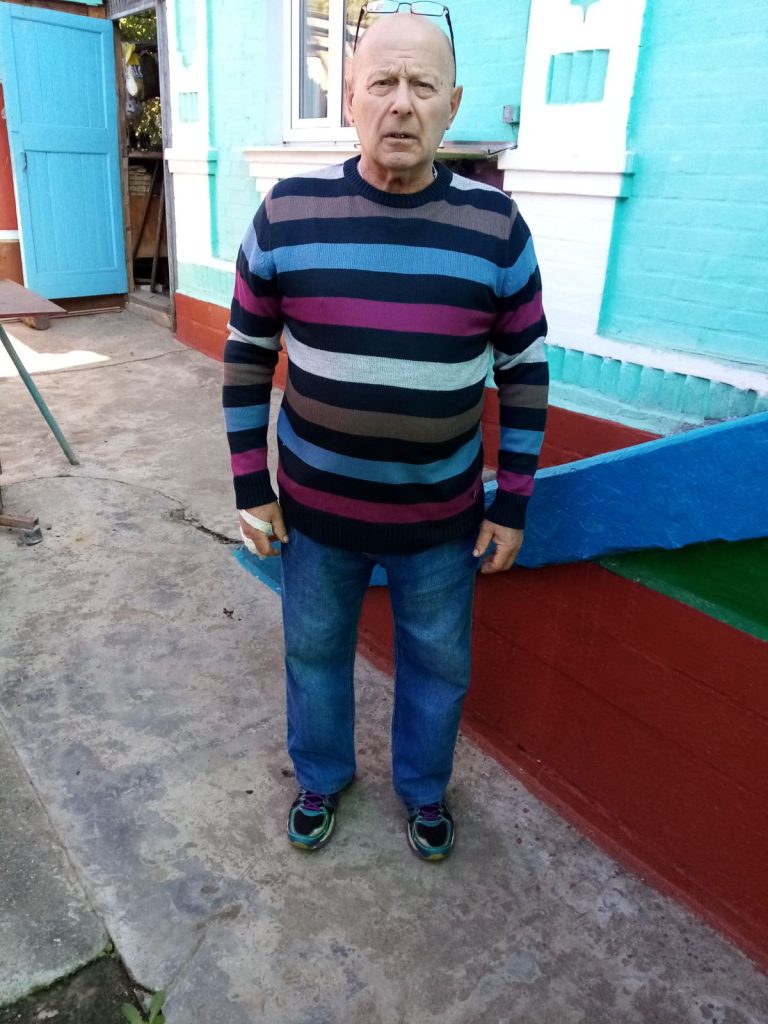
What inspired you to join this initiative? What responsibilities do you undertake?
The community is struggling to survive. There is no government funding. We receive information about events in the country and in the world only from the press.
Describe the heartbeat of your city and community. What are its cherished landmarks, and distinguished features?
Zvenyhorodka, the district center, is located on the Hnylyi Tikych River. The population is about 30,000 people, plus 20,000 refugees. The local history museum houses various artefacts, such as stone tools from the Bronze Age and different items from the Scythian times. A few settlements of the Cherniakhiv culture have also been found on its territory. Taras Shevchenko, the great Ukrainian poet, was born here.
Please describe the Jewish community in your city or town in terms of its size, institutions, and activities.
The Jewish community in the city has dwindled from a population of 7,000 to just 50 people. The community’s building, which was constructed in 1860, is in constant need of repairs. The community maintains a large Jewish cemetery where more than 3,500 Jews were shot during the Second World War. It cares for these graves and has created a memorial complex. Before the Russian-Ukrainian war, it always held Jewish holidays and Shabbat. The community is now mainly made up of elderly people.
How has the fabric of the Jewish community evolved since the onset of the war? (Have many relocated? Are people returning? Are there newcomers in your town?)
Five people were evacuated during the war, but the rest of the community lives in constant anxiety with little communication.
How has ACTION made a tangible difference in your community, especially for the elderly?
The material assistance provided by the foundation is a lifeline for many people in the community. Without it, they would not be able to afford medicine, food, or clothing, especially in the winter
Is there a particular message or insight you'd like to share with us?
The elderly are especially vulnerable.
Board Members
Action for Ukraine
Ella Goncharova
Progam Director
Debbie Kardon
Chair, Action for Ukraine
Executive Director, Action-PSJ
Barbara Karchmer
President, Executive Committee, Action-PSJ
Sergey Broude
Director, Action-PSJ
Barbara Anatolev
Clerk, Executive Committee, Nominating Committee, Action-PSJ
Marlene Bohn
Dnipro Partnership
Zelig Brez
Executive Director of the Dnipro Jewish Communities
Igor Romanov
Director of Small Jewish Communities in Ukraine
Donate for Lasting Change
Help Us Help Others: Donate Today for a Brighter Tomorrow
We have done so much, but there is much more to do! Amidst the war and challenging circumstances, your support ensures the survival of Ukrainian bubbes, zaydes, and youth, bringing warmth, comfort, and, most importantly, hope.
Action-PSJ continuously updates the supply wish list as requests from Ukraine come in. The situation on the ground is very fluid and changes frequently. We are currently concerned with items to help aging adults weather the blackouts and lack of expected heat this winter.
Please donate to Action-PSJ’s Ukraine Emergency Fund or buy items directly from our Amazon Wish list.
Direct Community Support
Together, we create a lasting difference, ensuring that no one is left behind in the pursuit of a brighter future.
Through your support, we are able to extend multiple initiatives to the lives affected by the war.
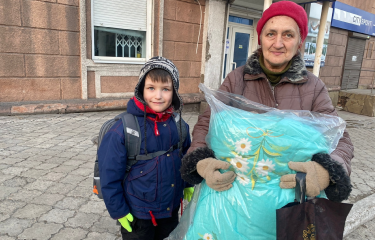
Tzedakah Sustenance
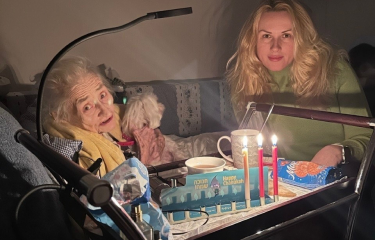
Telehealth Program
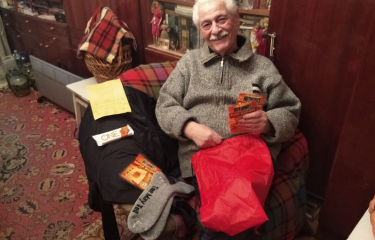
Humanitarian Aid
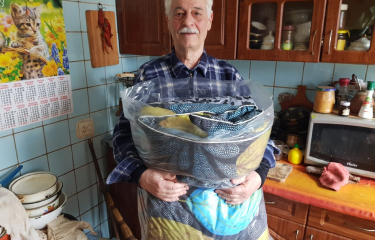
Jewish Heritage Initiative
Stay Connected: Join Our Newsletter
informed about ongoing war updates by subscribing to our newsletter.